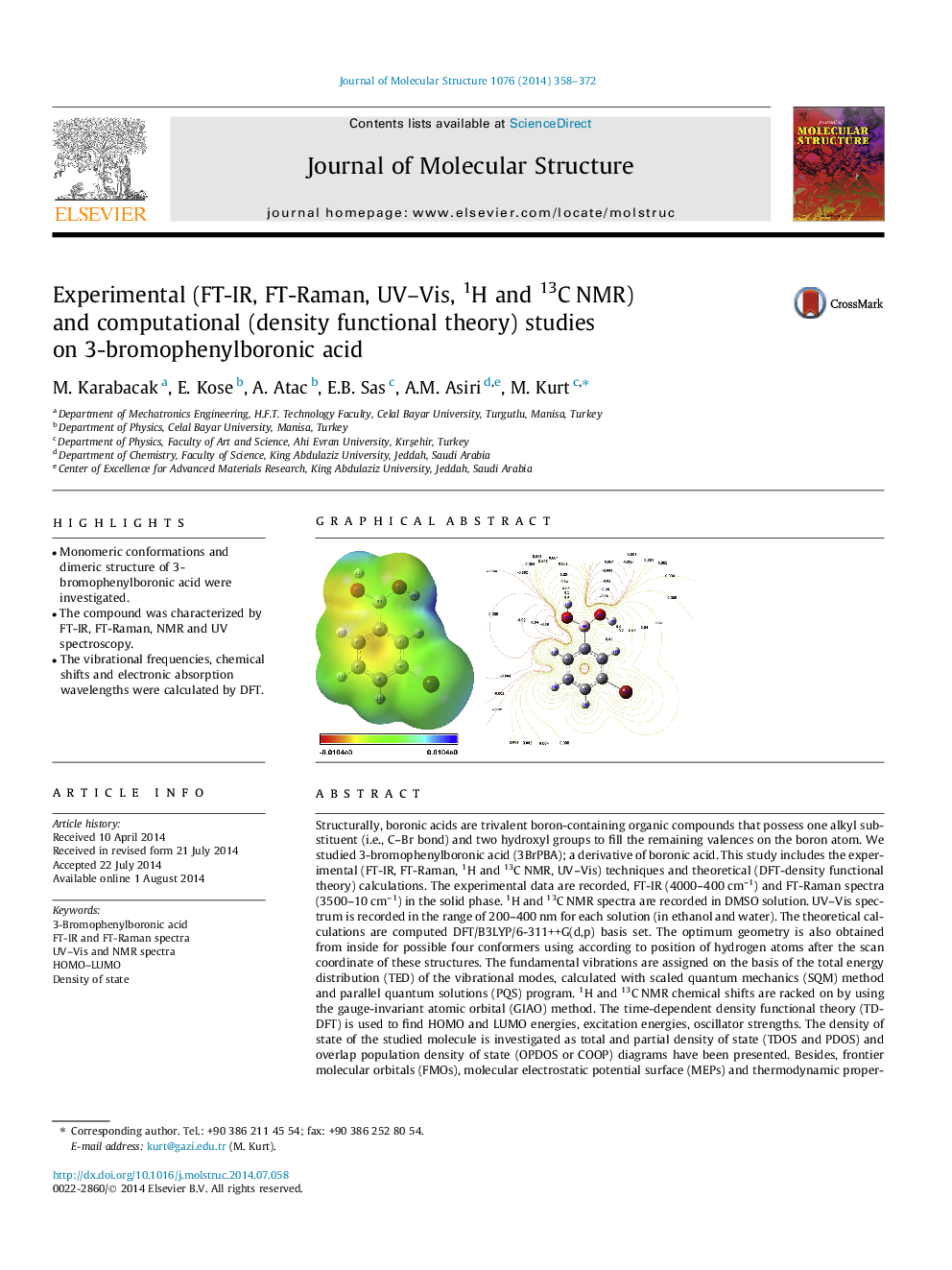| کد مقاله | کد نشریه | سال انتشار | مقاله انگلیسی | نسخه تمام متن |
|---|---|---|---|---|
| 1408463 | 1501741 | 2014 | 15 صفحه PDF | دانلود رایگان |

• Monomeric conformations and dimeric structure of 3-bromophenylboronic acid were investigated.
• The compound was characterized by FT-IR, FT-Raman, NMR and UV spectroscopy.
• The vibrational frequencies, chemical shifts and electronic absorption wavelengths were calculated by DFT.
Structurally, boronic acids are trivalent boron-containing organic compounds that possess one alkyl substituent (i.e., C–Br bond) and two hydroxyl groups to fill the remaining valences on the boron atom. We studied 3-bromophenylboronic acid (3BrPBA); a derivative of boronic acid. This study includes the experimental (FT-IR, FT-Raman, 1H and 13C NMR, UV–Vis) techniques and theoretical (DFT-density functional theory) calculations. The experimental data are recorded, FT-IR (4000–400 cm–1) and FT-Raman spectra (3500–10 cm–1) in the solid phase. 1H and 13C NMR spectra are recorded in DMSO solution. UV–Vis spectrum is recorded in the range of 200–400 nm for each solution (in ethanol and water). The theoretical calculations are computed DFT/B3LYP/6-311++G(d,p) basis set. The optimum geometry is also obtained from inside for possible four conformers using according to position of hydrogen atoms after the scan coordinate of these structures. The fundamental vibrations are assigned on the basis of the total energy distribution (TED) of the vibrational modes, calculated with scaled quantum mechanics (SQM) method and parallel quantum solutions (PQS) program. 1H and 13C NMR chemical shifts are racked on by using the gauge-invariant atomic orbital (GIAO) method. The time-dependent density functional theory (TD-DFT) is used to find HOMO and LUMO energies, excitation energies, oscillator strengths. The density of state of the studied molecule is investigated as total and partial density of state (TDOS and PDOS) and overlap population density of state (OPDOS or COOP) diagrams have been presented. Besides, frontier molecular orbitals (FMOs), molecular electrostatic potential surface (MEPs) and thermodynamic properties are performed. At the end of this work, the results are ensured beneficial for the literature contribution.
Figure optionsDownload as PowerPoint slide
Journal: Journal of Molecular Structure - Volume 1076, 5 November 2014, Pages 358–372